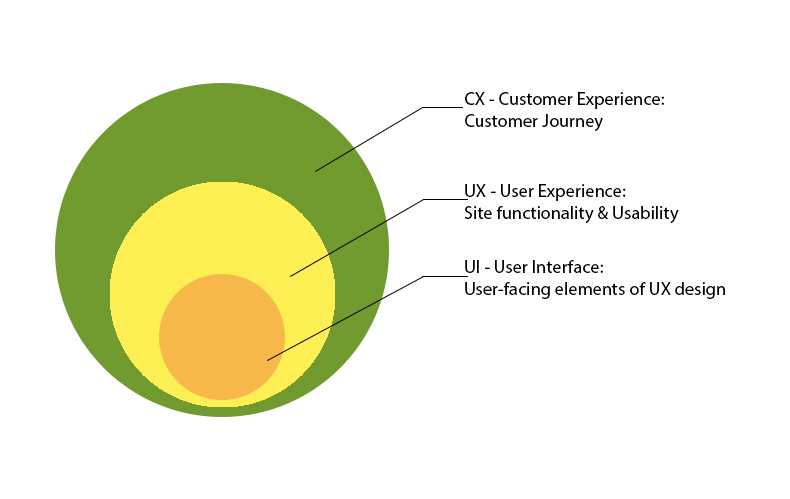UI – UX – CX
You have definitely heard about such terms as UI (User Interface), UX (User Experience), and CX (Customer Experience) and about their roles in development of your business. However, a lot of people still get confused when hearing them. So what is the difference between UI, UX, and CX?
The difference between these terms can’t be determined because they can’t be compared. They are all significant and essential, however you can’t say that one of them is more important than another.
Basically, User Interface (UI) is everything designed into an information device with which a person may interact. This can include display screens, keyboards, a mouse, and the appearance of a desktop. It is also the way through which a user interacts with an application or a website. The growing dependence of many companies on web applications and mobile applications has led many companies to place an increased priority on UI in an effort to improve the user’s overall experience.
User Experience (UX) Design is part of the design process. However, UX is more focused on the overall experience than just the look of the site. UX involves designing and planning an experience and creating a workflow for the users of a website or app (or any piece of technology really). It doesn’t matter how incredible your website is from designer’s point of view; if your customers don’t understand the navigation and it is hard for them to find the necessary information they will hardly ever come back to it. UX is the skeleton to your body. UX is the reason why you can’t just make a website. You need to do a ton of research and planning to figure out what you need, where things should go, and what it should say. A couple of seconds are enough for the user to decide if your site is worth their attention or not. That is why a good UX is so important.
Customer experience involves designing and reacting to a customer’s interactions in order to either meet or exceed their expectations. In doing so, the objective is to increase customer satisfaction, loyalty, and advocacy. This includes your customer’s ability to have a helpful, pleasant, and positive total experience with you. How likely your client is to refer you to others once again depends on CX. When you offer a better CX, you differentiate your product or service and you can not only increase the sales but gain advantage over your competitors. Researches have shown that 86% of your clients are ready to pay more for a more qualitative CX.

To sum up, UI is a part of UX and is usually related to visual and informational design. That is what a person faces when looking at the product or screen—the placement of graphical elements of the interface, buttons, and navigation. UX is an inside experience which a person gets while interacting with every aspect of the product or service and is a special component inside the CX which covers the whole work process between client and company, providing him the product or service, and its aim is to raise the levels of clients’ loyalty and contentment.





